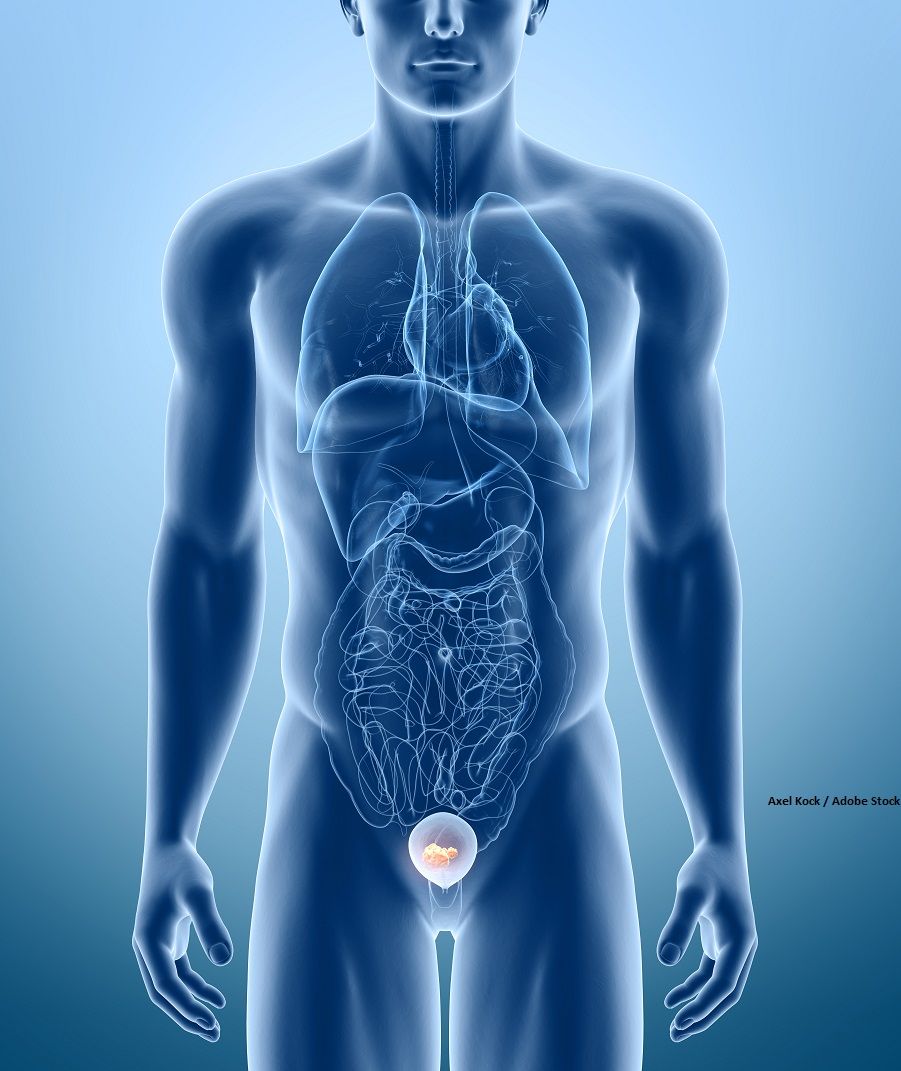Neoadjuvant Chemotherapy Plus Chemoradiotherapy Displays Efficacy in MIBC
Investigators assessed the long-term outcomes of neoadjuvant chemotherapy plus chemoradiation in those with non-metastatic muscle-invasive bladder cancer.
Investigators assessed the long-term outcomes of neoadjuvant chemotherapy plus chemoradiation in those with non-metastatic muscle-invasive bladder cancer.

Neoadjuvant, cisplatin-based combination chemotherapy (NAC) plus bladder-saving concurrent chemoradiation therapy (CRT) elicited long-term efficacy and safety in patients with nonmetastatic, muscle-invasive bladder cancer (MIBC), according to a poster presentation at the 2025 ACSO Genitourinary Cancers Symposium.
Efficacy data revealed that after a median follow-up of 96 months (range, 10-149), the median disease-free survival (DFS) in patients treated with NAC followed by CRT for nonmetastatic MIBC was 56.6 months, with a 5-year DFS rate of 49.2%. Furthermore, the median bladder intact DFS (BI-DFS) in this patient group was 45.6 months, and the 5-year BI-DFS was 47.6%. Additionally, the median overall survival (OS) was 105.0 months with a 5-year OS rate of 62.2%.
“[Neoadjuvant, cisplatin-based chemotherapy plus] concurrent chemoradiotherapy is a safe and effective bladder-sparing approach with encouraging long-term outcomes in carefully selected patients with MIBC,” Meghan E. Mahoney, MD, FRCPC, of the Division of Medical Oncology at the Tom Baker Cancer Centre in Calgary, Alberta, Canada, wrote in the presentation with study coinvestigators.
The study investigators contextualized the study background by highlighting a paucity of long-term data on the efficacy and tolerability of trimodality therapy in patients with MIBC opting for bladder-sparing approaches.
A total of 56 patients with nonmetastatic MIBC who were given NAC followed by bladder-sparing CRT between 2008 and 2017 at the Princess Margaret and Durham Regional Cancer Centers were included in the retrospective chart review. The primary outcomes were 5-year DFS, BI-DFS, and OS.
Patients initially underwent maximal transurethral resection of a bladder tumor (TURBT) prior to neoadjuvant treatment with gemcitabine plus cisplatin for 2 to 4 cycles. Following the second cycle of neoadjuvant treatment, imaging occurred in all patients, and those experiencing disease progression underwent cystoscopy before undergoing immediate radical cystectomy plus lymph node dissection. Furthermore, following the fourth cycle, all patients underwent imaging and cystoscopy, and those who experienced disease progression underwent maximal re-TURBT before undergoing immediate radical cystectomy plus lymph node dissection.
Responders to neoadjuvant treatment and those with stable disease were treated with external beam radiation therapy (EBRT) at a dose of 60 to 66 Gy to the bladder and pelvic lymph nodes, as well as concurrent weekly cisplatin at 40 mg/m2 for 6 weeks. Surveillance cystoscopy, imaging, and urine cytology occurred after CRT every 3 to 4 months.
During the surveillance period, those with no recurrence continued surveillance. Additionally, those with non-MIBC recurrence repeated TURBT with or without Bacillus Calmette-Guerin treatment. Those with MIBC recurrence underwent salvage cystectomy. Furthermore, patients who experienced distant recurrence during the surveillance period were treated with systemic therapy.
Patients included in the analysis had a median age of 72 years (range, 45-87), and 79% were male. Additionally, 55% of patients had formerly smoked, with 20% of patients identifying as current smoking. Patients primarily had an ECOG performance status of 0 (66%) or 1 (32%). The median creatinine clearance was 59 mL/min (range, 18-137), the median tumor size was 4.1 cm (range, 1.2-12), and 25% of patients had hydronephrosis.
Patients had clinical stage II (59%), III (34%), or IV (7%) disease, and the most common histologies were pure urothelial carcinoma (UC; 63%), squamous UC (23%), and plasmacytoid variant UC (13%). A total of 30% and 18% of patients had carcinoma-in-situ and lymphovascular invasion, respectively. Overall, 41% of patients experienced disease recurrence, with 20% of patients experiencing local recurrence, 14% experiencing recurrence requiring cystectomy, and 21% experiencing distant recurrence.
The primary NAC regimens were gemcitabine/cisplatin every 21 days (34%) or split gemcitabine/cisplatin every 21 days (57%). Overall, 5%, 32%, and 63% of patients underwent 2, 3, and 4 NAC cycles, with 95% of patients completing planned NAC treatment. The most common grade 3 or 4 NAC-related toxicities included neutropenia (11%), thrombocytopenia (4%), infection (4%), and anemia (2%). NAC dose reductions occurred in 55% of patients with a median dose reduction percentage of 25% (range, 15%-50%), and 39% of patients experienced NAC dose delays.
Additionally, the reasons for administering trimodality therapy included patient preference (59%), comorbidities related to radical cystectomy (36%), or some combination of both factors (4%). Most patients had a planned radiation therapy dose of 60 Gy or greater (91%), and all patients completed planned radiation. Furthermore, 86% of patients completed 60% or more of planned concurrent cisplatin dosing.
Reference
Mahoney ME, Diaz-Meija N, Atenafu E, et al. Long-term outcomes of neoadjuvant chemotherapy (NAC) before bladder-sparing chemoradiotherapy (CRT) for patients with nonmetastatic, muscle-invasive bladder cancer (MIBC). J Clin Oncol. 2025;43(suppl 5):819. doi:10.1200/JCO.2025.43.5_suppl.819
Newsletter
Stay up to date on recent advances in the multidisciplinary approach to cancer.